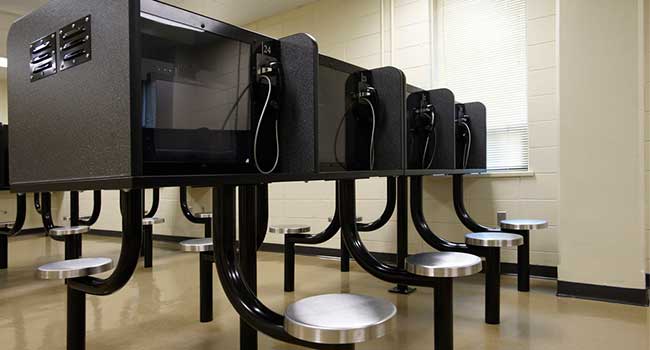
Arkansas Jail Implements Video Visits
- By Sydny Shepard
- Mar 14, 2016
There are many complications when allowing those who are not inmates into a jail or prison, there have been many problems with visitors sneaking in illegal contraband into the facility, or fights that break out between inmates and visitors. There is also the thought of manpower needed to scan and check every visitor that comes into the facility as well as the officers who are moving inmates from their cells to the visitation rooms.
Faulkner County Jail in Conway, Arkansas, is trying a new way to get around the security risks that accompany visits from friends and family by implementing a video system that is similar to Skype. The move is aimed at reducing the security threats and cutting down on officer manpower while allowing more opportunity for detainees to talk to their family and friends in a secure environment.
The video visitation, which will begin March 21, is an internet-based system that will be set up as a visitation station in an inmate’s cell or cell block. From the station, the inmate can see and talk to their visitor who is either located in another part of the jail, speaking from a similar visitation station, or from their smartphone, computer or tablet at home.
“This greatly reduces the amount of manpower needed to conduct visits by reducing the movement of detainees,” the sheriff’s office said in a news release. “We truly believe this system will be extremely helpful for families living more than five to 10 miles away from our location.”
Security is less of a problem with video visitation than in-person visits because fewer outsiders – some of whom could be carrying contraband – are entering the jail’s detention area. Another advantage of the video visitation is that inmates can see and talk with as many people as desired if the visitors are using a home computer.
Inmates can still have traditional, face-to-face visits if requested and approved in advance, but the days and hours for those visits are greatly restricted. Even then, visitors and inmates are separated by thick, transparent Plexiglas, and hearing each other can be difficult because there is no audio equipment.
The interactive system allows inmates to initiate contact directly with approved visitors without operator assistance. Just as telephone calls placed by inmates can be monitored, these visits also can be monitored for improper use. An inmate who abuses the system can be denied access to it in the future.
"I think eventually more of the sheriffs are going to gravitate toward the video visitation," director of the Arkansas Sheriffs’ Association, Ronnie Baldwin said. "The one major aspect is that it's more secure. It reduces the amount of contraband brought into jails.”
About the Author
Sydny Shepard is the Executive Editor of Campus Security & Life Safety.